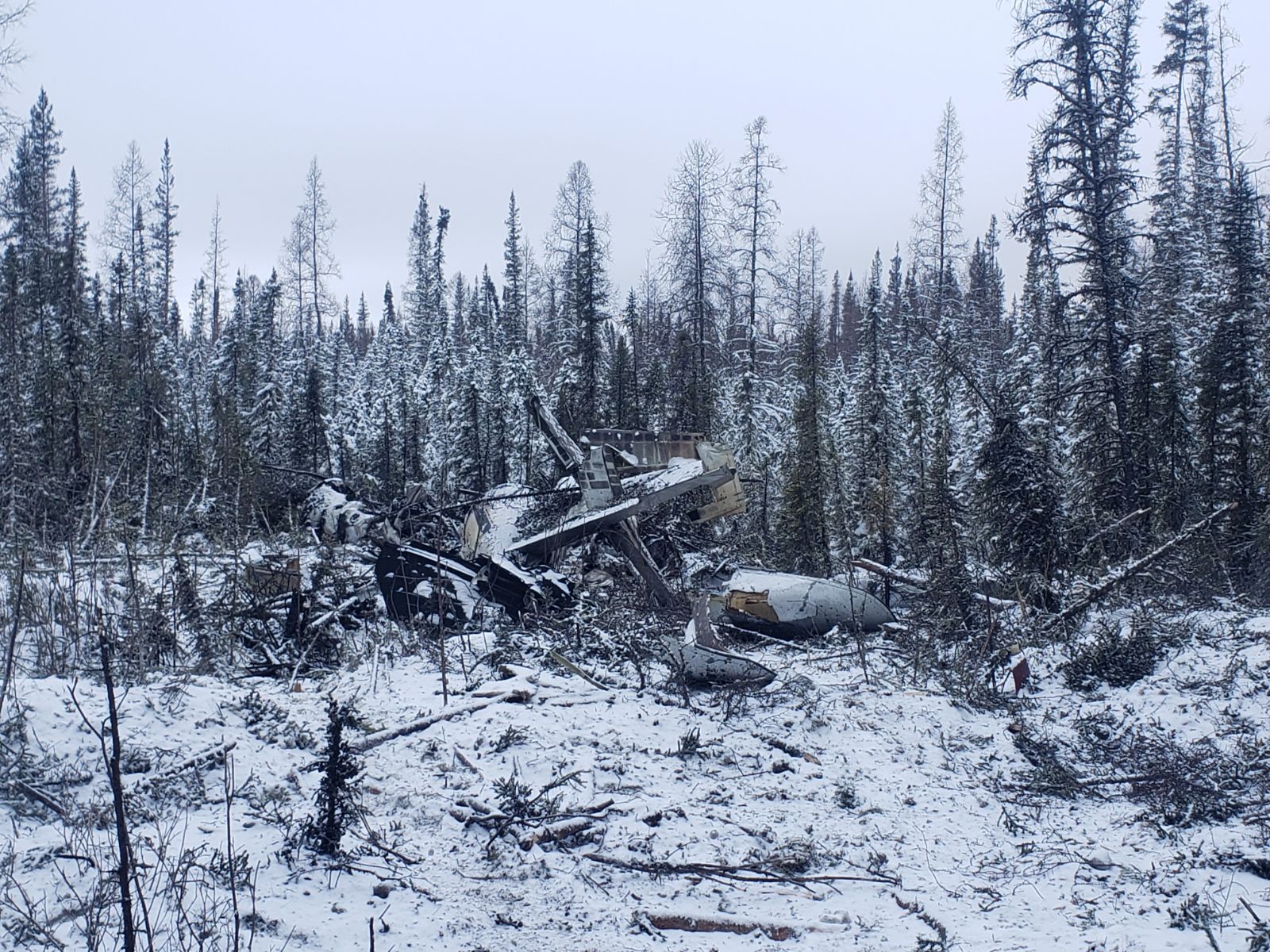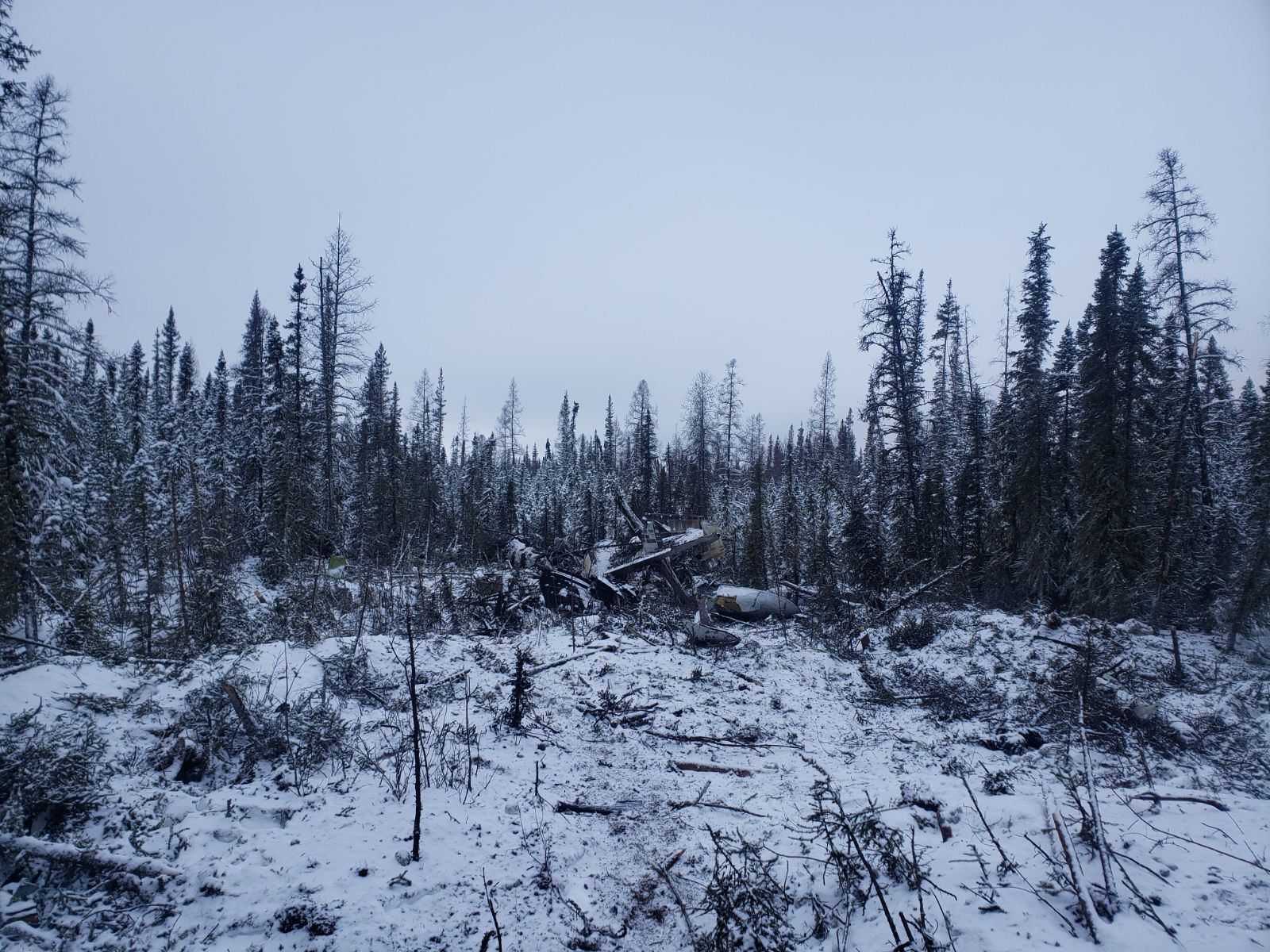Collision with terrain
Northwestern Air Lease Ltd.
BAE Systems Jetstream 3212, C-FNAA
Fort Smith Airport (CYSM), Northwest Territories, 0.7 NM NW
The occurrence
At 0642 Mountain Standard Time (MST) on 23 January 2024, the BAE Systems Jetstream 3212 aircraft (registration C-FNAA) operated by Northwestern Air Lease Ltd. was destroyed when it collided with terrain shortly after takeoff from Runway 30 on a scheduled flight from Fort Smith Airport (CYSM), Northwest Territories, to the Diavik Aerodrome (CDK2), Northwest Territories. Six people were fatally injured, and 1 person received minor injuries.
Work completed to date
Multiple interviews have been conducted in support of the investigation. The cockpit voice recorder (CVR) has been recovered, and the data for the flight, which was good quality, has been downloaded and analyzed. Closed-circuit television (CCTV) footage of the fuelling, passenger loading, and departure has been collected and analyzed. The engines and propellers have been removed from the wreckage and shipped to their respective manufacturers for detailed examination. No anomalies were found that would have contributed to the accident.
An aircraft performance analysis has been conducted given the data available to the investigation (the aircraft was not equipped with a flight data recorder [FDR], nor was it required to by regulation). It was determined that the snow that had accumulated on the aircraft’s critical surfaces prior to takeoff did not play a direct role in negatively influencing aircraft performance during the take-off roll or initial climb. The investigation continues to focus on the human performance and decision-making elements of the accident.
Next steps
This accident investigation is ongoing and is currently in the report writing phase. The initial draft report is going through the TSB’s internal review process prior to the confidential draft report review process. Should critical safety issues be identified during the investigation, the TSB will immediately notify relevant parties so appropriate and timely safety action can be taken. No safety communications have been issued at this time.
A final report will be released at the conclusion of the investigation.
Media materials
Investigation information
Download high-resolution photos from the TSB Flickr page.
Class of investigation
This is a class 2 investigation. These investigations are complex and involve several safety issues requiring in-depth analysis. Class 2 investigations, which frequently result in recommendations, are generally completed within 600 days. For more information, see the Policy on Occurrence Classification.
TSB investigation process
There are 3 phases to a TSB investigation
- Field phase: a team of investigators examines the occurrence site and wreckage, interviews witnesses and collects pertinent information.
- Examination and analysis phase: the TSB reviews pertinent records, tests components of the wreckage in the lab, determines the sequence of events and identifies safety deficiencies. When safety deficiencies are suspected or confirmed, the TSB advises the appropriate authority without waiting until publication of the final report.
- Report phase: a confidential draft report is approved by the Board and sent to persons and corporations who are directly concerned by the report. They then have the opportunity to dispute or correct information they believe to be incorrect. The Board considers all representations before approving the final report, which is subsequently released to the public.
For more information, see our Investigation process page.
The TSB is an independent agency that investigates air, marine, pipeline, and rail transportation occurrences. Its sole aim is the advancement of transportation safety. It is not the function of the Board to assign fault or determine civil or criminal liability.

